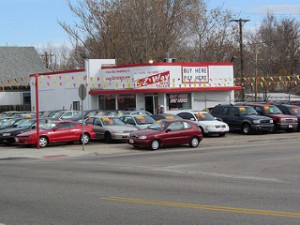Why should someone choose to invest in new shelving rather than trying to save some money by purchasing used shelving instead? Sounds like a question for the retail store fixture experts at Midwest Retail Services!
Why Buy New Shelves vs. Used?
Here are the best answers as contributed by our group of retail fixture experts. The first response from Gary Kroneberger even comes with the promise of a free gift…
Gary Kroneberger, Sales Executive
I have personally assisted clients through many scenarios of buying used fixtures vs. new fixtures. Every single time I have done so, the price for used fixtures ends up being very close to the price of new fixtures — and in some cases used can even cost more. Not to mention the hassle factor!
There are SO many things that can contribute to the true cost of retail store fixtures that I put together a checklist of more than 20 things you should consider when deciding to buy new or used fixtures. Just send an email to sales@mw-rs.com and say “I want Gary’s list!” and I’ll email you the PDF file containing the entire checklist for free.
Mike Welsh, Customer Sales
Yes, it’s possible to buy used retail store fixtures for less (maybe even a lot less0, but what condition are they in? Are they the right height, length, and depth for your application? Are all the parts that you need included? Are you willing to dismantle, transport, clean, and reassemble them in your store? Can you get additional parts for the type of shelving you are purchasing? (Do they even make these fixtures anymore??) And finally, what condition are these used fixtures really In?
There are many hidden costs to used fixtures that most people don’t realize until they make that purchase. Yes, you can save some money but was it really worth the cost?

Chris Bell, Sales Representative
When buying used shelf vs. a new shelf, the one thing I always hear is that you never get all the parts you need on the first order, and then you waste time and money trying to make your all installation efforts come together. And in most cases “used” really means old. You know the saying “you usually get what you pay for” and once you buy used you’re on your own. One of the reasons I chose to work at Midwest Retail Services is that we are there before AND after the sale is done. Many times the actual price difference between new and used shelving is not all that significant. I recommend giving us a call and let us see what’s available for your specific need.
Donna Cossin, General Manager
Chances are the dollar amount for used fixtures may be slightly less at the outset (though not as much as you might think), but there will likely be problems that add other costs and expenses to your bottom line.
The fixtures may be missing components (and you won’t even know that until you’re assembling them!) This will cause delays with any install deadline or grand opening date you may have scheduled. If components are missing it may be problematic locating them. Even when the manufacturer of the fixtures is known, the parts may be unavailable due to design changes or obsolete product lines. In some situations a shelf manufacturer may have produced custom fixtures for a large-volume customer and components for those shelves may not be obtainable at all. If the manufacturer is not one of the major fixture brands (Lozier, Madix, Streater), the shelves may be difficult to identify and replacement parts impossible to locate.
The condition of used fixtures may also be wanting. Your product manufacturers go to a lot of trouble with their packaging to make it eye-appealing. If those products are then displayed for sale on old, scratched, and dented fixtures it will detract from the visual appeal and will result in lost sales.
These are some of the considerations that make it a gamble when purchasing used fixtures. Sometimes you win, but often you stand to lose more by way of time, money, and sales than you’d ever notice in the relatively minor price difference in buying new rather than used fixtures.
Matt Ray, President
Many retailers fail to fully calculate the true cost of buying used store fixtures. It is not just the price of the shelving, there are always additional costs involved. Those costs can include additional labor hours, missing components, additional cleaning or painting, or ineffective plan-o-grams due to the incorrect or incomplete shelving.
Some Retailers will spend a significant amount of money on the construction of a store and then take the cheapest route on what the customer sees throughout their shopping experience.
What impression does that leave on a customer?
What is the true cost of that first and lasting impression, and isn’t that something worth investing in?
